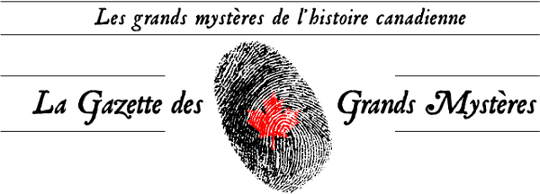Great Unsolved Mysteries in Canadian History:
|
|
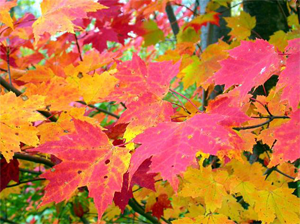
Credit: R. Wiebe (https://robwiebe.com/) Back to the classroom! Greetings from the team at the Great Unsolved Mysteries in Canadian History (GUMICH) project, based at the University of Victoria. Welcome to the latest edition of the new GUMICH Gazette, a thrice-yearly newsletter to help keep educators up to date on news and tips for teaching with historical mysteries. 

Attend a GUMICH Workshop in Vancouver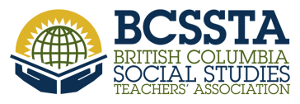
If you’re planning to attend the annual conference of the British Columbia Social Studies Teachers' Association in Vancouver this fall, don’t miss the session being presented by GUMICH Executive Director Merna Forster. The conference will be held at the Vancouver Technical Secondary School (2600 E. Broadway, Vancouver) on October 25, 2013. Check the conference website for details. Just let us know if you’d like a presentation about the Great Unsolved Mysteries in Canadian History project at one of your conferences! Women’s History Month in Canada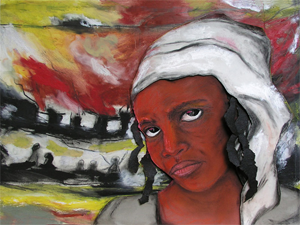
Imaginary depiction of Angélique by Annie Beaugrand-Champagne. Did you know that October is Women’s History Month in Canada? One mystery that you could explore with your students next month is Torture and the Truth: Angélique and the Burning of Montreal When Montreal caught fire in April 1734, suspicion fell on a Black slave called Marie Angélique. But did she really start the fire? You can sign up for instant access to our free Teachers’ Guide for this mystery or check out our short, easy-to-use mysteryquests for this story. A few examples of Mysteryquests related to the story of Angélique:
You will find the complete quest online along with many more MysteryQuests that can be used with the Great Unsolved Mysteries in Canadian History. Teaching Tool – Changing Impressions of Tom Thomson and his Art
Be sure to check out Changing Impressions of Tom Thomson and his Art (MysteryQuest 36). This is a new critical challenge for students ages 16-18. This MysteryQuest invites students to determine if, and how, impressions of Tom Thomson's character and his contributions as an artist have changed over time. To accomplish this task, they will need to learn more about Thomson's life and art. Students will analyze various impressions of the man and of his artwork during two periods: around 1917 at the time of his death, and around 1977 on the 100th anniversary of his birth. Based on this, students will then judge how impressions of Thomson the man and the artist have changed and remained constant over time, and of the changes which of these are the most significant. 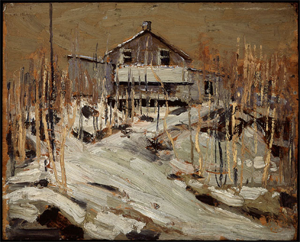
Fraser’s Lodge by Tom Thomson (Art Gallery of Alberta) You will find the complete quest online along with many more MysteryQuests that can be used with the Great Unsolved Mysteries in Canadian History. Teaching Tool – Whiteboard: Who shares responsibility for Aurore’s Death?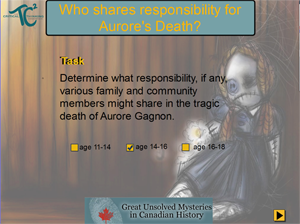
One of our new whiteboards is MysteryQuest 20: Who shares responsibility for Aurore’s Death?, for ages 14-16. This teaching tool can be used with your students as they investigate the cruel death of Aurore Gagnon, a young girl who died in a quiet Quebec village in 1920: Aurore! The Mystery of the Martyred Child. You can access all of our whiteboards on the MysteryQuests.ca website. Upcoming Mystery – Franklin Expedition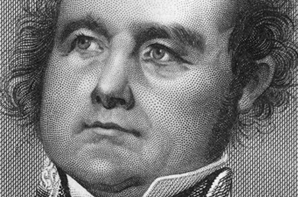
Franklin Ever wonder what happened to explorer Sir John Franklin, his 128 men and two ships after they sailed to the Arctic in 1845? Many teachers have been encouraging us to add more mysteries to the GUMICH website, and we’re thrilled to announce that a new history mystery about this lost expedition is planned! The University of Victoria has been awarded a Partnership Development Grant from the Social Sciences and Humanities Research Council (SSHRC). Thanks to this funding and contributions from a variety of partners across Canada who are involved with the project, we’ve just begun work on “What Happened to the Franklin Expedition?” Historian Lyle Dick, former president of the Canadian Historical Association and Parks Canada alumnus, will serve as research director for the new mystery website. Twitter – New!
At the suggestion of many teachers, we’ve finally starting tweeting. Please follow GUMICH on twitter. Our name is Unsolved Mysteries and we’re @MysteriesCanada. We hope that you and your students will follow us, and share your theories as classes investigate our history mysteries! We’re excited about researching the Franklin Mystery and want to share our progress with you on Twitter. You can find us at Franklin Expedition and follow @FranklinMystery. Primary SourceFrom the mystery Who Discovered Klondike Gold?: For a century, controversy has swirled around the question of who deserves credit for the discovery that set off the greatest gold rush in the history of the world. One of the contenders is Skookum Jim (First Nations name “Keish”), a member of the wolf clan of the Tagish First Nation. Check out the following account of the discovery. Billy Johnson Tells His Story[Interviewer] Who found the gold do you think? [Billy Johnson] It was Skookum Jim he found the gold down there Dawson Charlie he tell me . . . . Skookum Jim I’m going to drink water he said, he went down near the water that river come down there he put his mouth go down his head, he got no cup nothing, that’s the time he something like yellow stuff in the water shiny, of course he tool that, “my God it’s heavy” another one down there he pick it up, it shine, two [sic], he don’t say nothing, he put it in his pocket he forget it, “Well, let’s go” they pack, they go across that Creek there they want to get home my God George Carmack come, “you boys got good luck eh?” “yes, we caught a moose” they killed some meat. Thats [sic] the time he think about it, Skookum Jim that Skookum Jim that yellow stuff, take out “what is that here George here?” gee whiz it just plenty shine, gee whiz, that’s a gold, where you get that Skookum Jim, “over there” “c’mon Skookum Jim, going to stake now”. Get excited, yes, wanna go there, says can’t see nothing in dark you wait for tomorrow he tell him, say O.K. Jim soon as daylight get here we will go. Geo Carmack get excited George Carmack. After a while he just get up there and dark yet he come back again that one George Carmack. Finally get tired of it, “lets go”. That’s the place they find there, they found it some gold I think bedrock over there you know thats the place gold eh? Source: Yukon Territorial Archives, YTA, COR 1096 88/58 SR11 (7) Skookum Jim Oral History Project Fonds, Mrs. Johnny Ned, Billy Johnson, Billy Johnson Tells His Story, n/a, n.d
Featured Image For Jerome: The Mystery Man of Baie Sainte-Marie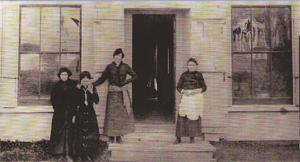
The Meechi store, Meteghan
GUMICH Mystery: Jerome: The Mystery Man of Baie Sainte-Marie
Title: The Meechi store, Meteghan Creator: Unknown Collection or Fond: Private collection of Harold Robichaud Our website about the Jerome Mystery provides a great collection of images related to the legless stranger who was found on the beach of Sandy Cove in Nova Scotia in 1863, and the local Acadians who took him in. Just check out the archives section for “Jerome: The Mystery Man of Baie Sainte-Marie”. Learn more about this history mystery on the GUMICH site. Partner News – Concordia UniversityA number of recent projects from Concordia University in Montreal will be of particular interest to history teachers and professors. This fall the popular new book An Illustrated History of Quebec: Tradition and Modernity will be available in paperback for the first time. 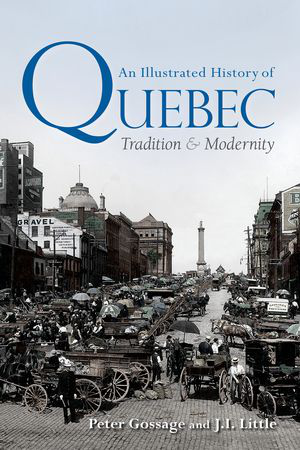
An Illustrated History of Quebec: Tradition and Modernity "This should become the go-to history of Quebec," notes Brian Young in Canada’s History. Co-authored by Concordia historian (and GUMICH co-director) Peter Gossage and professor Jack Little from Simon Fraser University, this highly recommended publication was published in August 2012. The book traces the fascinating history of Quebec from the ice age to the 21st century, and features more than a hundred illustrations. You’ll find more information about the book at Oxford University Press. Another great resource from Concordia is Canal: Walking the Post-industrial Lachine Canal, an innovative audiowalk which was launched in June 2013. Concordia’s Centre for Oral History and Digital Storytelling (a partner in the forthcoming GUMICH mystery devoted to the Franklin Expedition) developed this entertaining and informative educational tool in collaboration with Parks Canada - Lachine Canal National Historic Site. The bilingual Canal audiowalk includes a historical booklet which will guide visitors as they walk from Atwater Market to the Saint Gabriel Lock in Montreal. Listeners can take a walk back in time as they hear the stories of area residents and works. The audio file, a map, and the booklet can be downloaded for free from the project website. 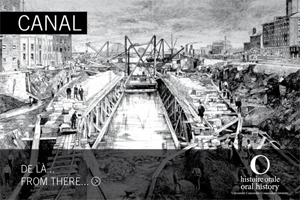
Canal: Walking the Post-industrial Lachine Canal |
Contact Us:admin@canadianmysteries.ca |
Subscribe to the GUMICH Gazette.
Please remove me from future GUMICH Gazette mailings.
